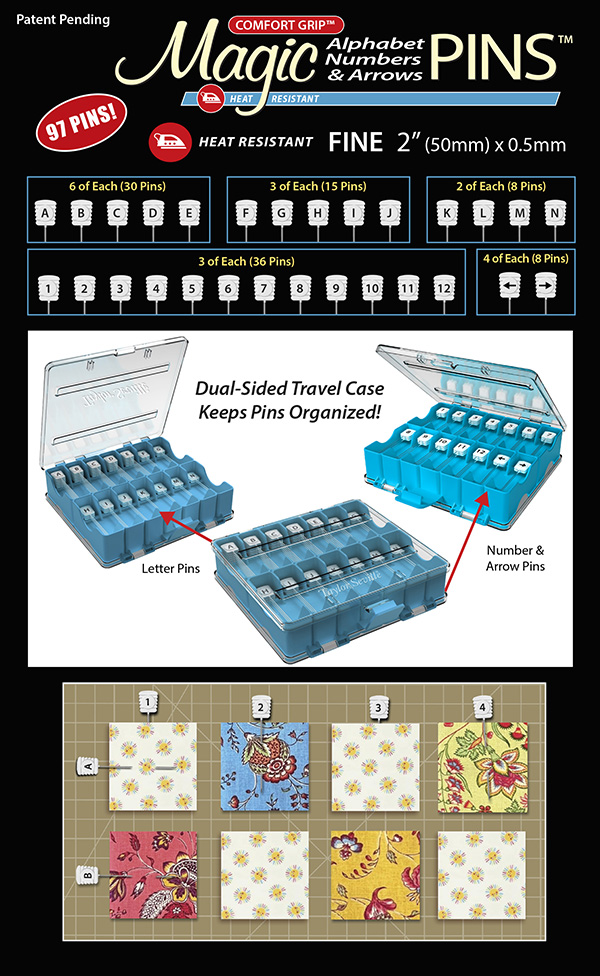
Available from RNK Distributing!
Taylor Seville brings excitement to sewing and quilting by providing top notch tools and notions to
make the crafting experience more enjoyable and productive!

TS-MALPNUM – Magic Alphabet Numbers & Arrows Pins
Keep block pieces, units and rows in order with Numbered & Lettered pins.


Reviews
There are no reviews yet.